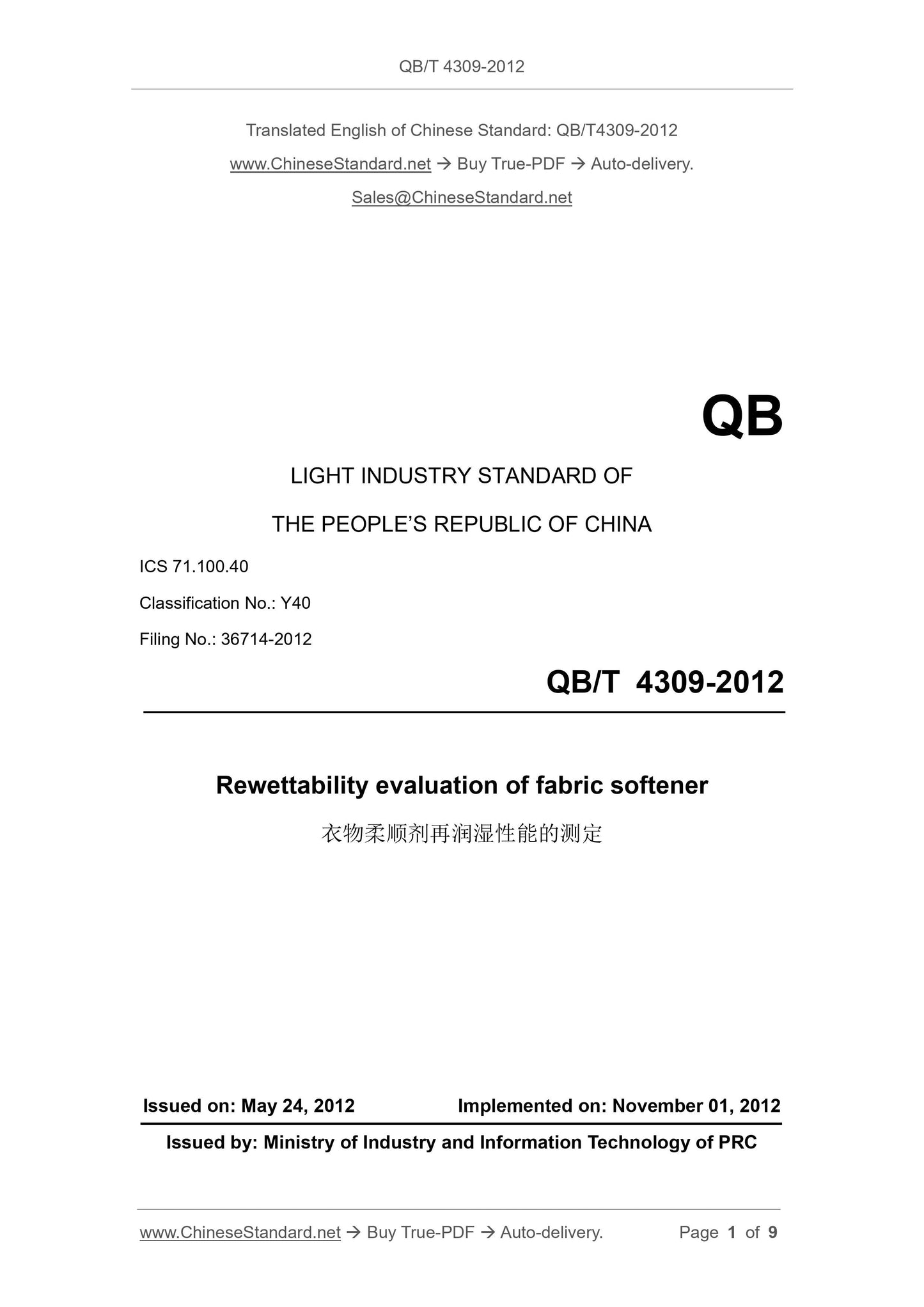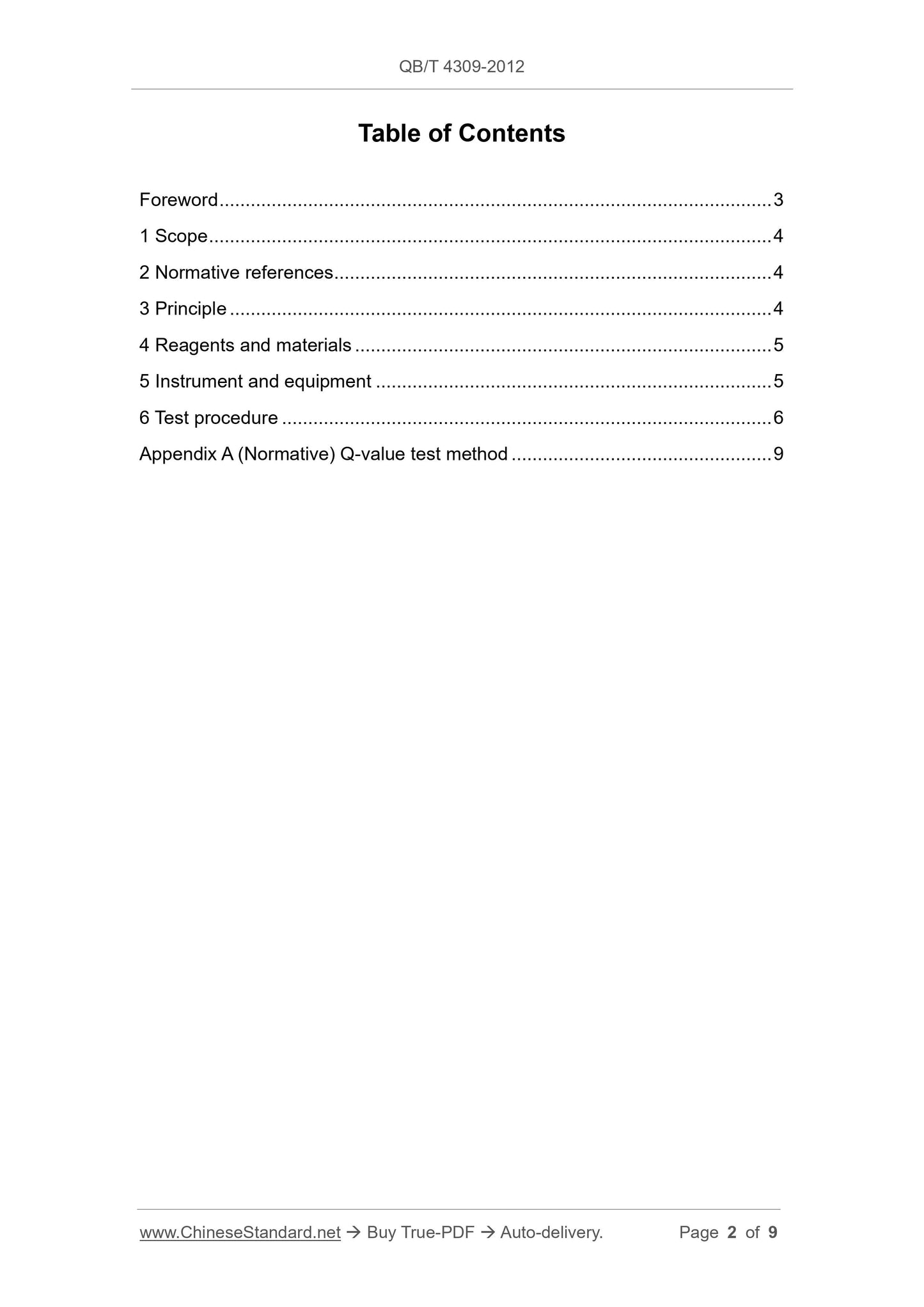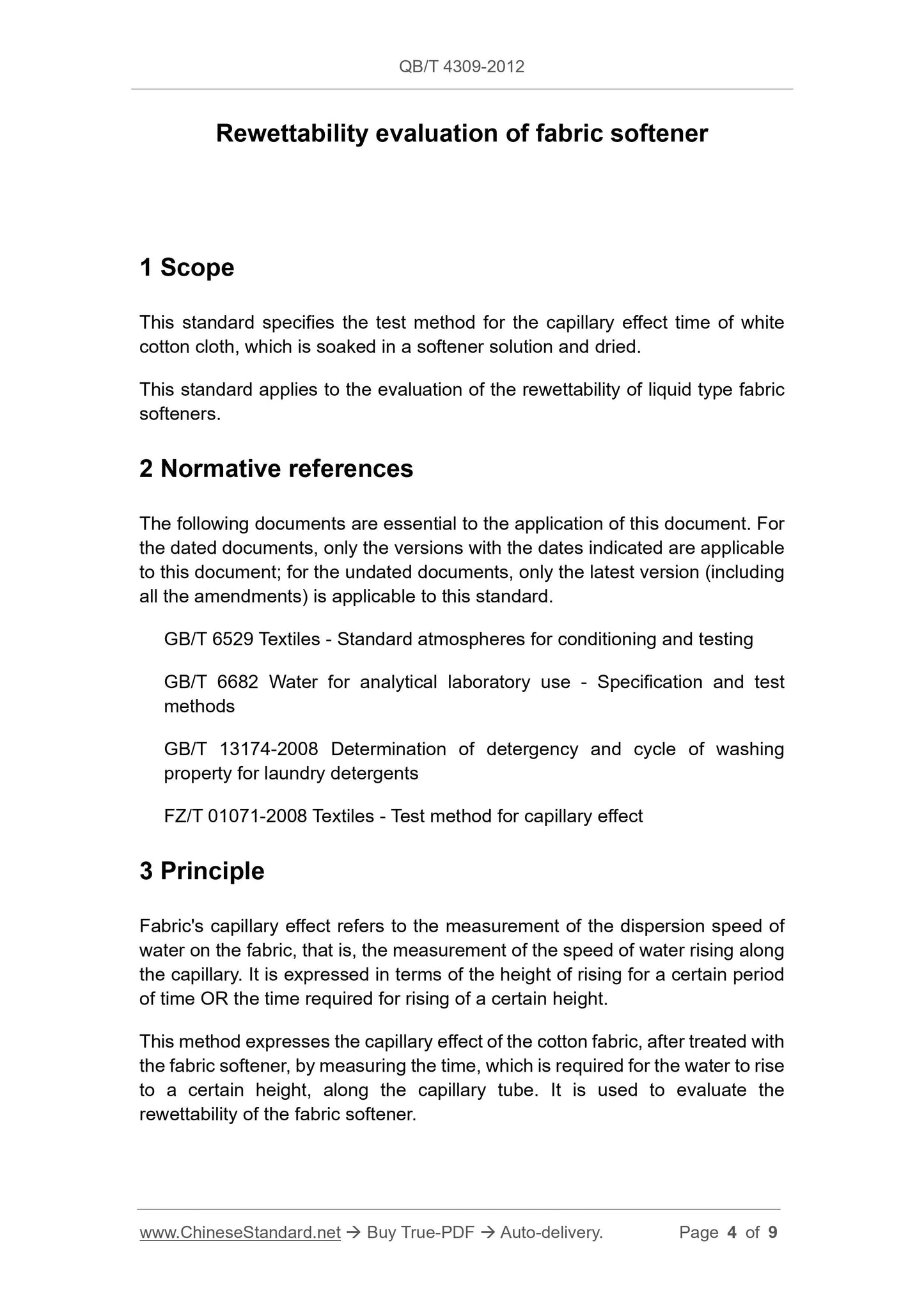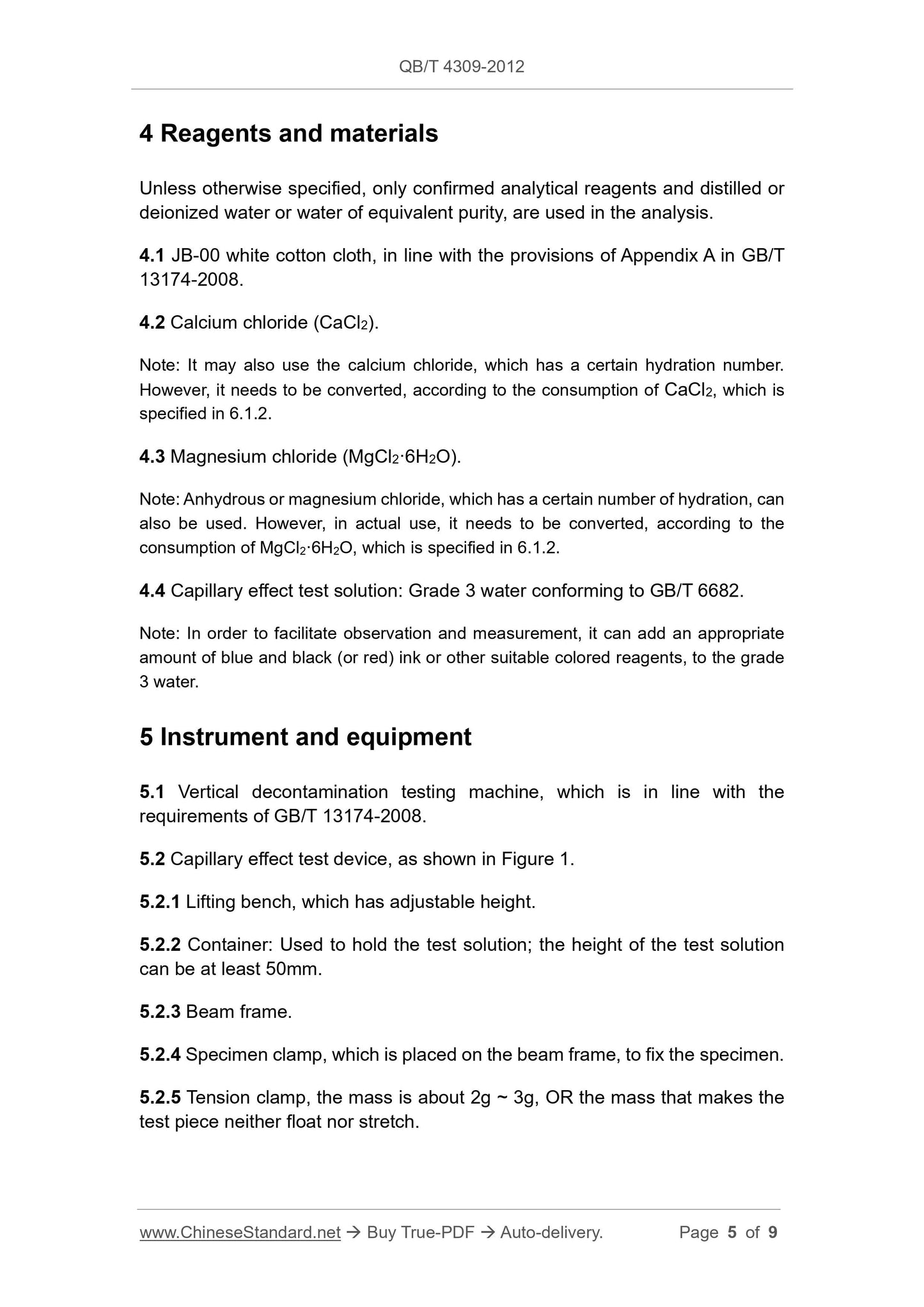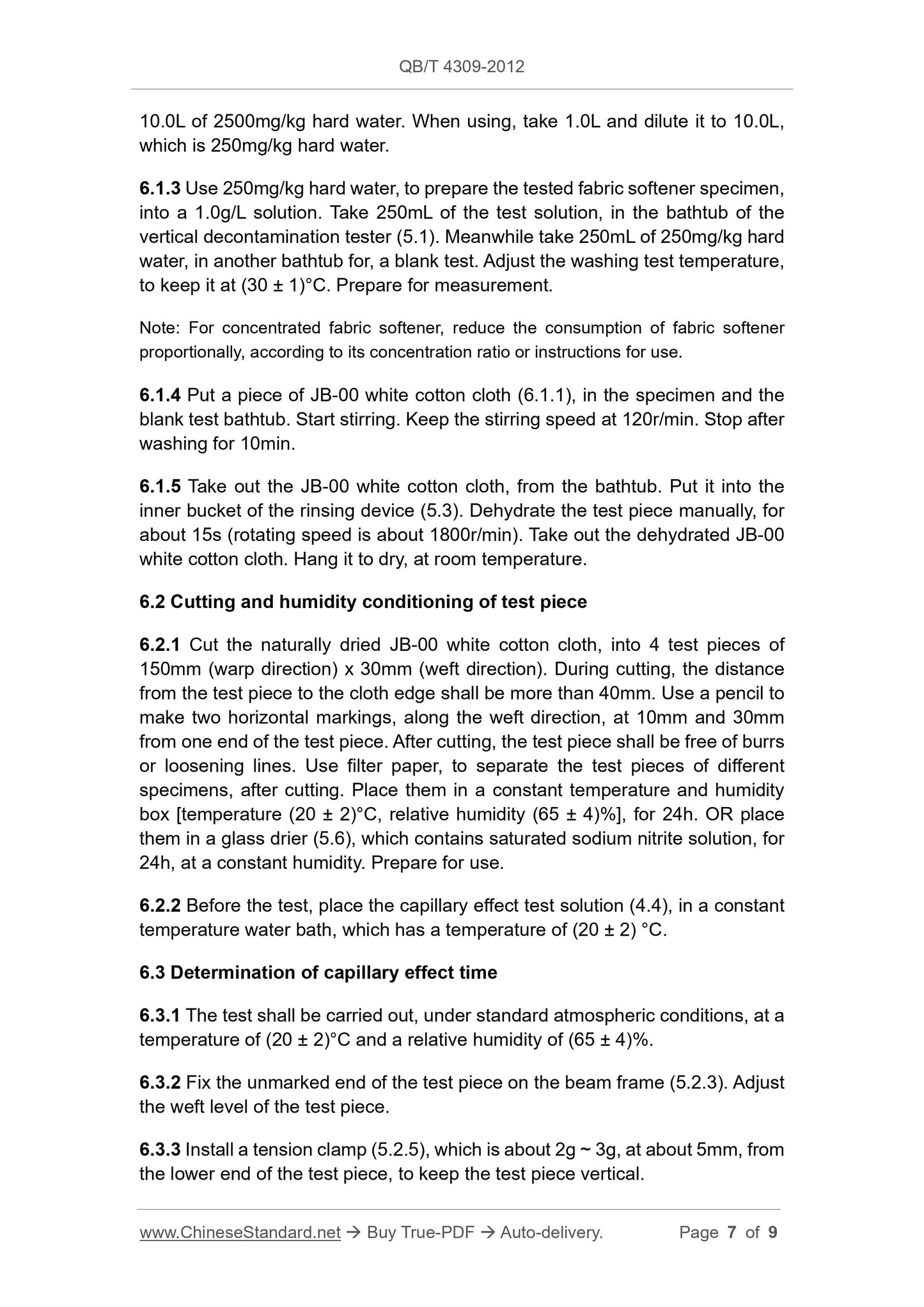1
/
of
5
www.ChineseStandard.us -- Field Test Asia Pte. Ltd.
QB/T 4309-2012 English PDF (QB/T4309-2012)
QB/T 4309-2012 English PDF (QB/T4309-2012)
Regular price
$170.00
Regular price
Sale price
$170.00
Unit price
/
per
Shipping calculated at checkout.
Couldn't load pickup availability
QB/T 4309-2012: Rewettability evaluation of fabrics softener
Delivery: 9 seconds. Download (and Email) true-PDF + Invoice.Get Quotation: Click QB/T 4309-2012 (Self-service in 1-minute)
Newer / historical versions: QB/T 4309-2012
Preview True-PDF
Scope
This standard specifies the test method for the capillary effect time of whitecotton cloth, which is soaked in a softener solution and dried.
This standard applies to the evaluation of the rewettability of liquid type fabric
softeners.
Basic Data
| Standard ID | QB/T 4309-2012 (QB/T4309-2012) |
| Description (Translated English) | Rewettability evaluation of fabrics softener |
| Sector / Industry | Light Industry Standard (Recommended) |
| Classification of Chinese Standard | G73 |
| Classification of International Standard | 71.100.40 |
| Word Count Estimation | 7,715 |
| Quoted Standard | GB/T 6529; GB/T 6682; GB/T 13174-2008; FZ/T 01071-2008 |
| Regulation (derived from) | ?MIIT Announcement 2012 No.20; Industry Standard Filing Announcement 2012 No.7 (Total No.151) |
| Issuing agency(ies) | Ministry of Industry and Information Technology |
| Summary | This standard specifies the cotton cloth softener solution immersion test method by the capillary effect and drying time. This standard applies to Liquid Fabric Softener rewetting performance evaluation. |
Share
